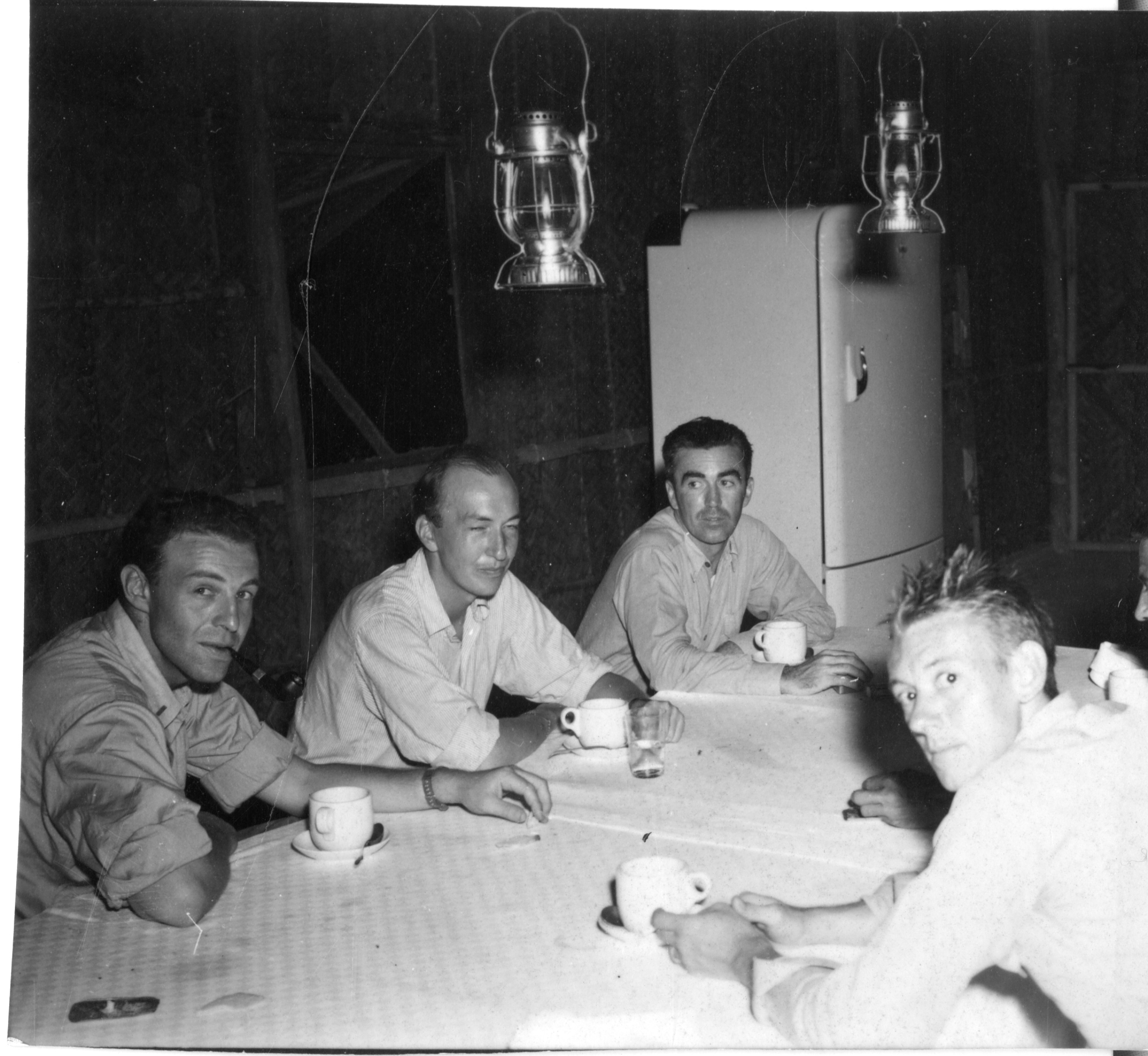WWII: Staff Supporting the War Effort
When the men and women of the Smithsonian heard the call to duty in World War II, they again took up the call as they had during World War I. Secretaries Charles G. Abbot and Alexander Wetmore provided leadership that brought the Smithsonian’s resources to the aid of the nation, while safeguarding its primary mission: the increase and diffusion of knowledge. Once again, Smithsonian staff responded to the crisis and brought their knowledge and skills into service for their country.
Deignan and Ripley Collecting in Ceylon
The staff of the Smithsonian supported the war efforts along with the rest of the country. Men from all walks of life, including some of the men of the Smithsonian, volunteered for wartime service. Smithsonian employees such as Herbert G. Deignan, an ornithologist and curator in the Division of Birds, and future Secretary S. Dillon Ripley, assistant curator in the Division of Birds, volunteered for service during the war. The Office of Strategic Services, predecessor to the Central Intelligence Agency, stationed them in Ceylon, now Sri Lanka, where they continued their bird collecting and maintained contact with the Smithsonian. Both knew the geography and languages of the region, having traveled widely in the South Pacific before the war. While working in Ceylon, they both continued their ornithological passions. Deignan and Ripley enjoyed bird watching in their free time and were avid collectors. Ripley donated 354 bird skins to the Smithsonian collections in just one year and Deignan sent back several hundred specimens, including: bird skins, shells and barnacles, mammals, insects, reptiles, snails and worms.1 Their efforts seem to be limited only by the difficulties of collecting in the field – preparing skins, fending off pests, and storing specimens. Even knowing what exactly to collect was a problem. Far from the scholarly resources usually available to scientists, Deignan had little idea of what species were rare or common. Especially when collecting outside his field – shells, insects, or mammals for example – he had to rely on his best judgment in his collecting choices.
Smithsonian Staff who Served



Conclusion
After the attack on Pearl Harbor in December of 1941, Smithsonian staff focused their energies on the war effort – by enlisting in the armed forces or sharing their expertise with war agencies. They returned from the war with new perspectives and dedicated themselves to a renovated National Museum.
RELATED COLLECTIONS
- Herbert Girton Deignan Papers, 1916-1970, RU007465
- Oral history interviews with S. Dillon Ripley, 1977-1993, RU 009591
- Charles Lewis Gazin Papers, 1901-1984 and undated, RU 007314
- Oral history interviews with Frank A. Taylor 1974, 1979-1980, 1982, 2005, RU 009512
- Oral history interviews with Paul Edward Garber, 1974, RU 009592
FOOTNOTES
1 Pamela Henson “Smithsonian Goes to War,” in Science and the Pacific War: science and survival in the Pacific, 1939-1945, Roy M. MacLeod (Dordrecht: Kluwer, 2000), 40. Return to text
2 1943 Annual report of the Board of Regents of the Smithsonian Institution (Washington: Smithsonian Institution, 1944), 24. Return to text
3 10845G. Arthur Cooper and C. Lewis Gazin, 1961, by Unknown, Photographic Print, Smithsonian Institution Archives, Record Unit 9524, Box 1 G. Arthur Cooper Oral History Interviews, MNH-601D. Return to text
4 Smithsonian Institution Archives, Record Unit 9512, Taylor, Frank A, (Frank Augustus), 1903- interviewee, Frank A. Taylor Interviews, 371. Return to text
5 Smithsonian Institution Archives, Record Unit 9592, Garber, Paul Edward, 1899-1992. interviewee, Paul Edward Garber Interviews Finding Aid. Return to text
6 1943 Annual report of the Board of Regents of the Smithsonian Institution (Washington: Smithsonian Institution, 1944), 2. Return to text

